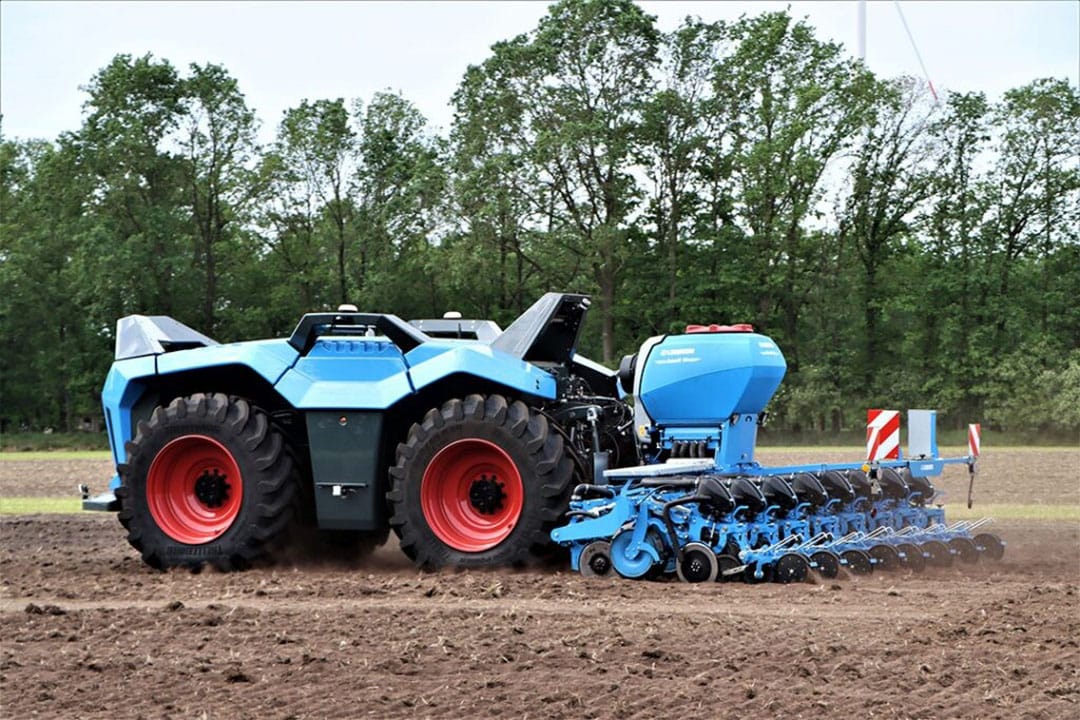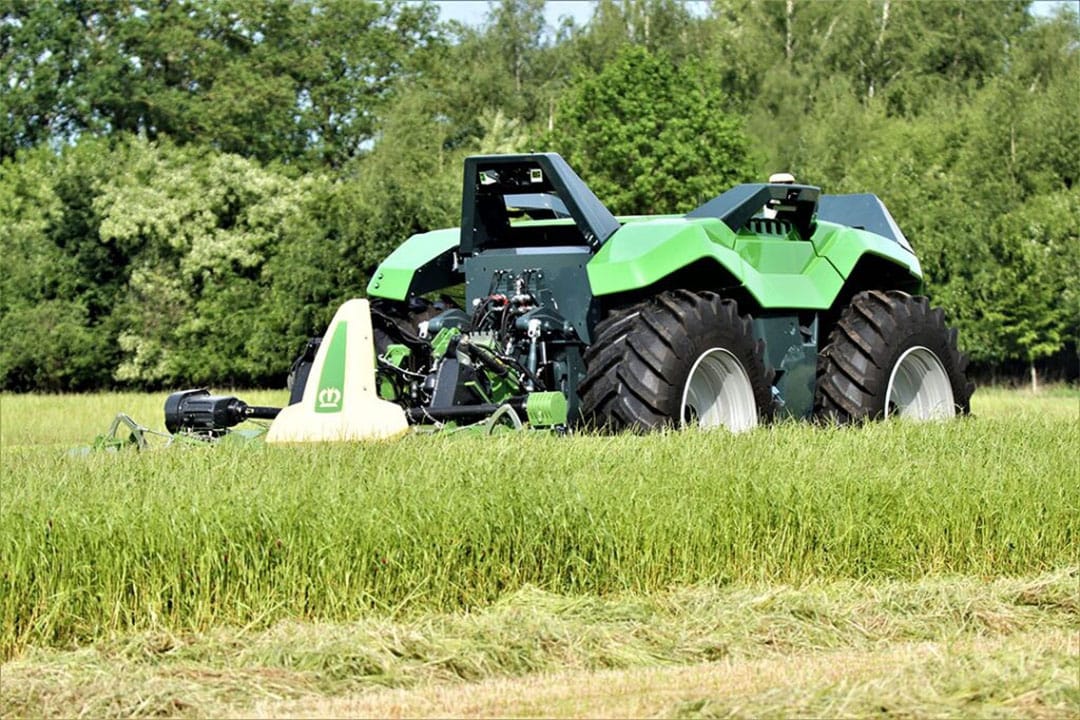Lemken and Krone show autonomous field robot

A tool that can work autonomously and 24 hours a day. That is the goal of the Combined Power project set up by the German implement manufacturers Lemken and Krone. Two prototypes were on display yesterday in Hopsten, Germany.
Two months ago, the manufacturers Krone and Lemken announced the joint development of a field robot. This robot was shown to the public for the first time on Thursday 19 May. The purpose of the robot is to work more efficiently. According to the implement manufacturers, the number of farms has halved in the past 15 years, which means that the surface area of the farms has doubled.
Text continues below video
VTE field robot
The result is the so-called VTE field robot, where VTE stands for ‘Verfahrenstechnischen Einheit’. It is still a concept model. The manufacturers expect to have five models ready in 2023, and to be able to actually enter the market in 2025. The expected production number is not yet known.
In the deepest secrecy, a project team with engineers from Krone and Lemken officially started in 2017. The team consists of 20 people. The manufacturers have two concept models ready. The VTE robot should perform tasks as mowing, raking, tedding, ploughing, rotary harrowing and sowing autonomously.
Text continues below image

Diesel engine generates electrical power
The robot has an MTU four-cylinder engine that delivers 230 hp to a generator. This supplies power to both axles and the power take-off. The robot weighs almost 8 tonnes and is fitted with four 650/65 R38 Trelleborg IF tyres. The manufacturers indicate that the diesel engine could be replaced by a battery pack or hydrogen engine in the future.
Text continues below image

Cameras and sensors
The autonomous vehicle has several sensors that monitor the work process and cameras that keep a close eye on the surroundings. The robot drives at a maximum speed of 20 km/h and has four-wheel drive and four-wheel steering. Because the vehicle was developed to drive only on the fields, it is not equipped with an air pressure exchange system. According to the manufacturers, transport by road will be done for the time being with a flatbed.
Join 17,000+ subscribers
Subscribe to our newsletter to stay updated about all the need-to-know content in the agricultural sector, two times a week.



